This easy homemade basil pesto recipe is fresh, fast and way better than store-bought! It comes together in just 5 minutes with a handful of ingredients. I’m sharing my favorite ways to use it, plus tips for preventing browning and how to freeze pesto like a pro.
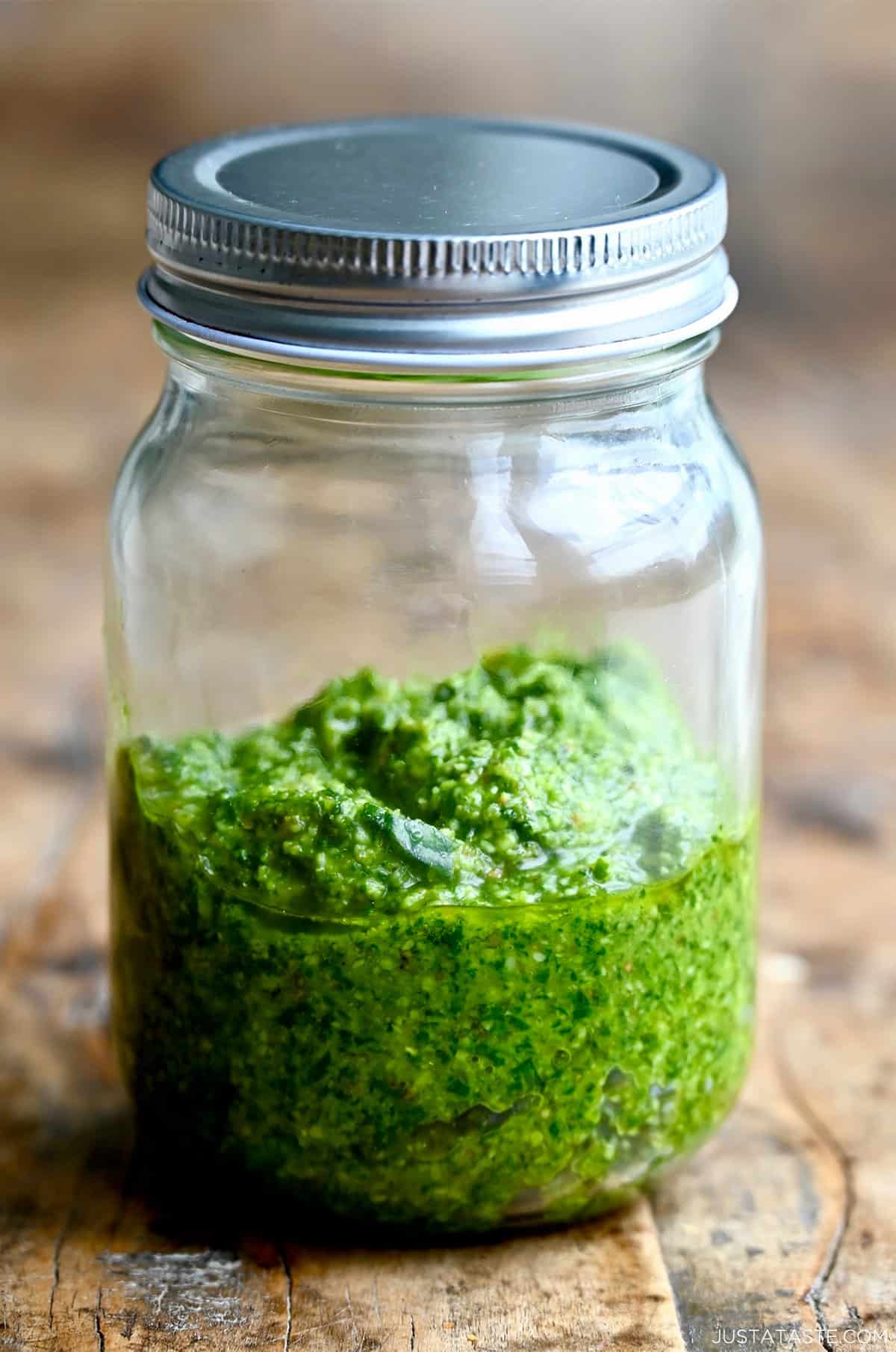
Table of Contents
In my family, we call this homemade pesto recipe “green gold,” and once you taste it, you’ll understand why! My mom, Noni, has been blending up batches of basil pesto for as long as I can remember, and her recipe is the real deal: vibrant, garlicky and packed with fresh basil flavor. Whether we’re stirring it into pasta or spooning it over stovetop chicken breasts, this sauce never lasts long in our fridge.
It comes together in minutes, and while it’s tempting to save pesto for dinner, I’m here to say: don’t. It belongs on everything from eggs to sandwiches to savory toasts. Best of all, it freezes beautifully, so you can enjoy a taste of summer year-round.
Here’s what goes into the best homemade basil pesto—and how to tweak it based on what you have (or don’t have!) on hand:
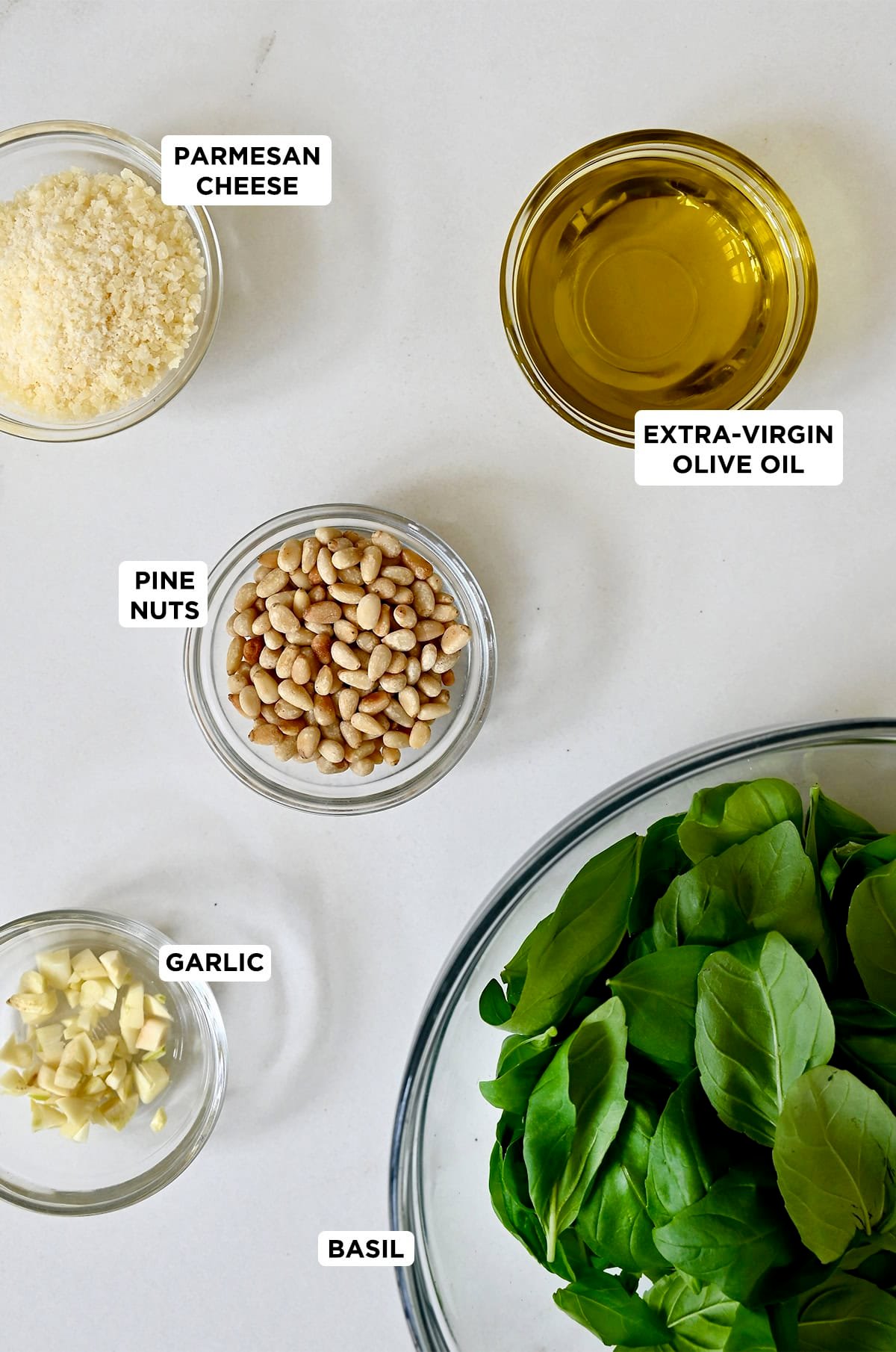
- Basil: Fresh basil leaves are the base of this classic Italian pesto recipe. When I’m not using up my mom’s garden basil, I grab one of those small potted basil plants from the produce section of my local grocery store. Wash and dry your basil thoroughly—wet leaves can water down the flavor and cause your pesto to turn brown faster. I use a salad spinner, then lay the leaves out on a clean towel to air dry for a few minutes before blending.
- Parmesan cheese: Freshly grated Parmesan adds salty, savory flavor. I prefer Parmigiano-Reggiano or Pecorino Romano, but Asiago or Grana Padano also work great.
- Garlic: A little raw garlic goes a long way in adding flavor to homemade pesto. I use 1 to 2 cloves, depending on their size and how garlicky I want the sauce to be.
- Pine nuts: Traditional pesto uses pine nuts. They’re buttery, slightly nutty, and help make the sauce extra smooth. But they’re expensive and not always easy to find. I often swap in walnuts, but almonds, cashews or even pistachios (like in my pistachio pesto recipe) work, too. I usually toast my pine nuts in a dry skillet for a few minutes to bring out the flavor—highly recommend!
- Extra virgin olive oil: Use a good-quality extra-virgin olive oil. It’s the main liquid here and adds rich flavor. My favorite brand is Kosterina. (Not sponsored—just love it!)
- Salt & pepper: Just a pinch to taste! I recommend blending everything else first, then seasoning at the end so you don’t overdo it, especially since some cheeses are saltier than others.
See the recipe card for full information on ingredients and quantities.
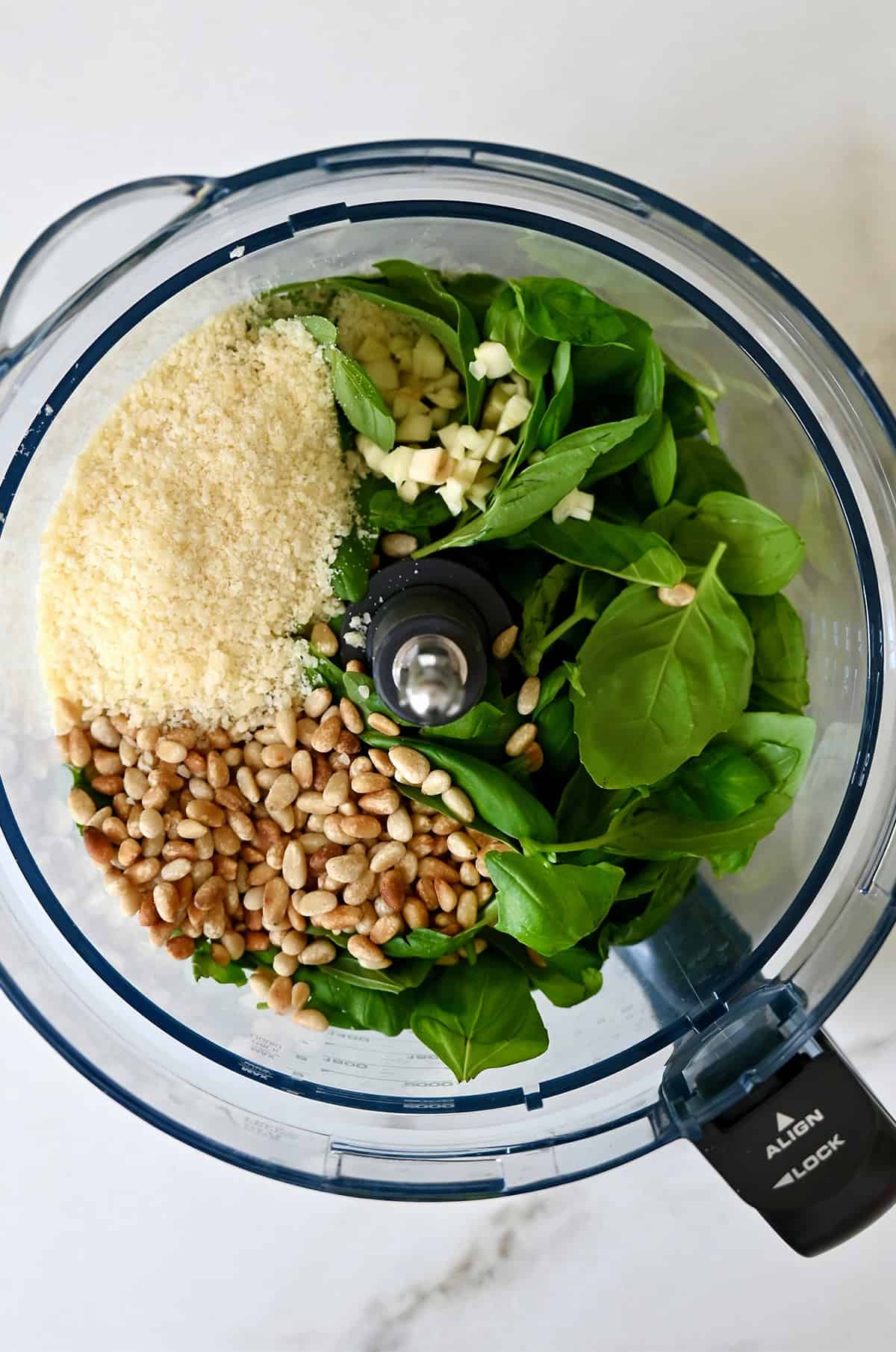
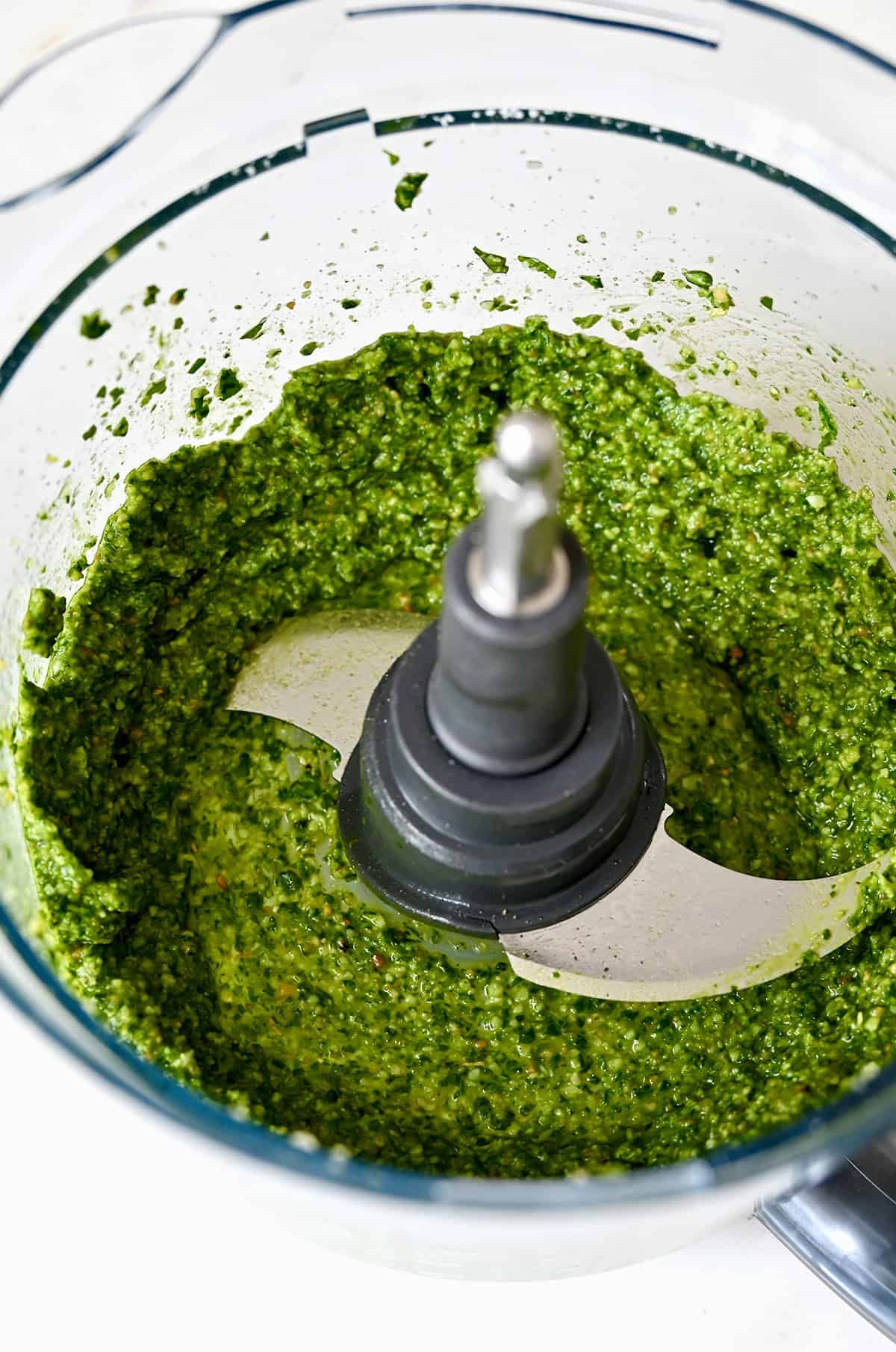
Making pesto from scratch couldn’t be easier. Best of all, this recipe can easily be doubled or even tripled if you’ve got extra basil on hand.
- Add the basil, pine nuts, garlic, Parmesan, salt and pepper to a food processor. Pulse until everything is finely chopped.
- With the processor running, slowly drizzle in the olive oil until the mixture is smooth but still has texture. Scrape down the sides as needed.
- Taste and adjust. Want more garlic? Salt? Cheese? This is your moment.
That’s it!
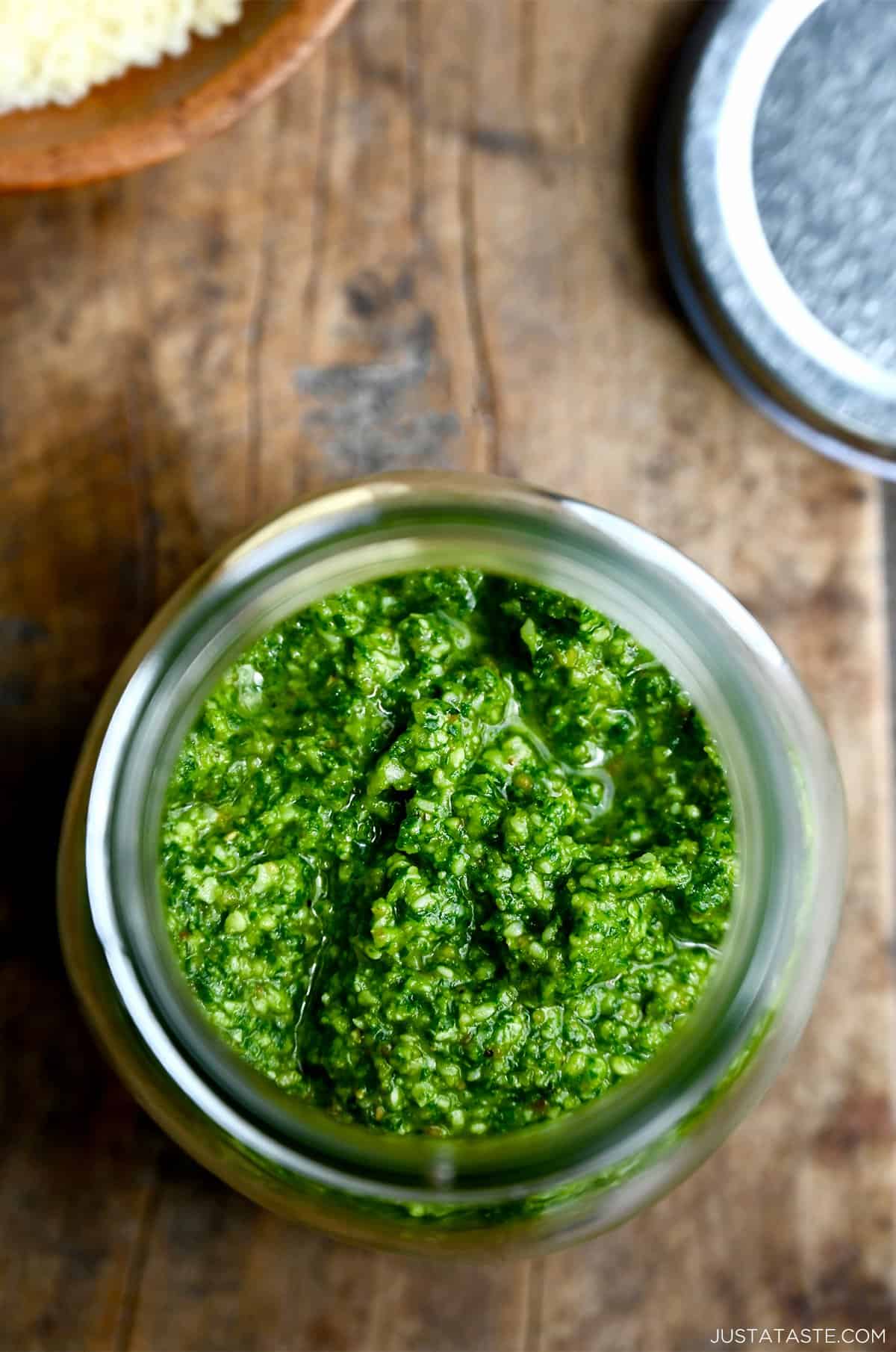
Favorite Ways to Use Pesto
I could eat pesto for breakfast, lunch and dinner. From scrambled eggs and grilled cheese sandwiches to lasagna roll-ups and beyond, here are my favorite ways to use basil pesto:
- Toss it with pasta: A classic for a reason. Try it with my pesto pasta for a quick weeknight dinner.
- Pesto eggs: Use my recipe for pesto eggs on cheesy toast and swap the butter for pesto next time you fry an egg.
- Wrap it in puff pastry: This Pesto Puff Pastry Wreath is as show-stopping as it is delicious.
- Lasagna: Swirl it into my lasagna roll ups for a delicious twist on a comfort food favorite.
- Pesto chicken: Stuff it into chicken roulades or slather atop pan-seared chicken breasts.
- Grilled cheese sandwiches: Spread pesto onto your favorite bread (or try my recipe for no-yeast bread), then layer on your go-to cheese (I love cheddar and a slice or two of gouda). Cook it in a skillet with a little butter until golden and crispy on the outside and gooey in the middle.
- Swirl into soups: A spoonful over tortellini soup with greens or creamy homemade tomato soup adds a pop of flavor and color.
- Use as a pizza base: Skip the marinara sauce and go green! Pesto makes a delicious base for homemade pizzas.
- Pesto caprese bread: Add a dollop of pesto atop my caprese garlic bread recipe.
- Serve as a dip: Perfect with homemade French fries, homemade garlic knots or homemade focaccia.
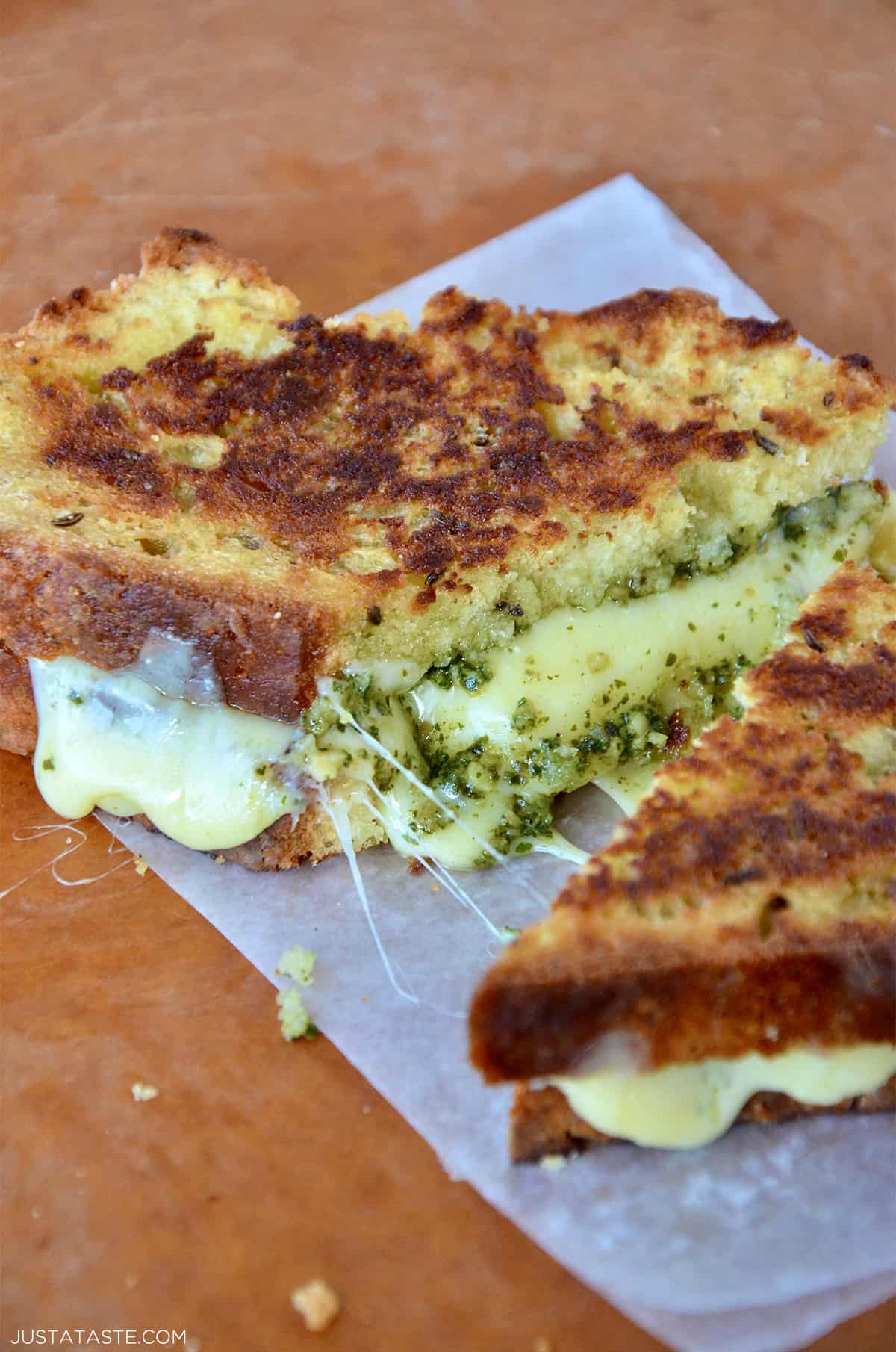
How to Store Homemade Pesto
Pesto will keep in an airtight container in the fridge for up to 5 days. To help prevent browning, pour a thin layer of olive oil over the top and press a piece of plastic wrap directly against the surface before sealing the container. It’s an extra step, but it helps to block out air and keeps that gorgeous green color bright and vibrant.
FAQ: Can You Freeze Pesto?
Yes! Freezing pesto is one of my favorite ways to preserve summer’s flavor. Here are my two go-to methods:
- Silicone tray: Spoon pesto into a silicone ice cube tray and freeze until solid. Pop out the cubes and transfer to a freezer-safe bag or container.
- Plastic bag with wooden rod trick: Spread pesto into a freezer-safe zip-top bag, press out the air, then use the handle of a wooden spoon or chopstick to press ridges into the bag (kind of like a grid). Freeze flat, then break off individual portions as needed.
Frozen pesto will keep for up to 3 months. You don’t need to thaw the entire bag—just break off a cube or chunk and stir it right into hot pasta, soups, scrambled eggs or roasted veggies. It’ll melt and mix in perfectly.
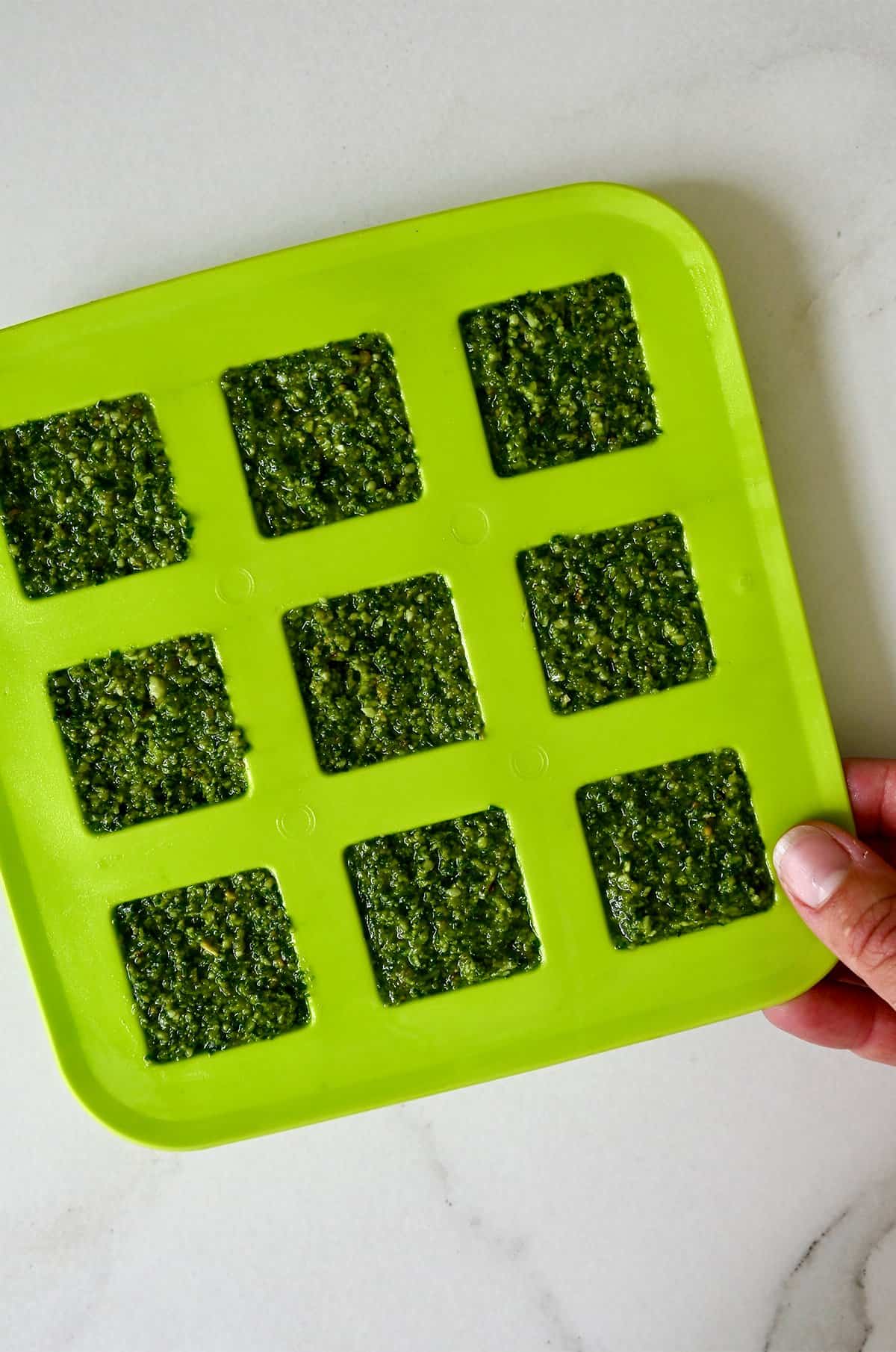
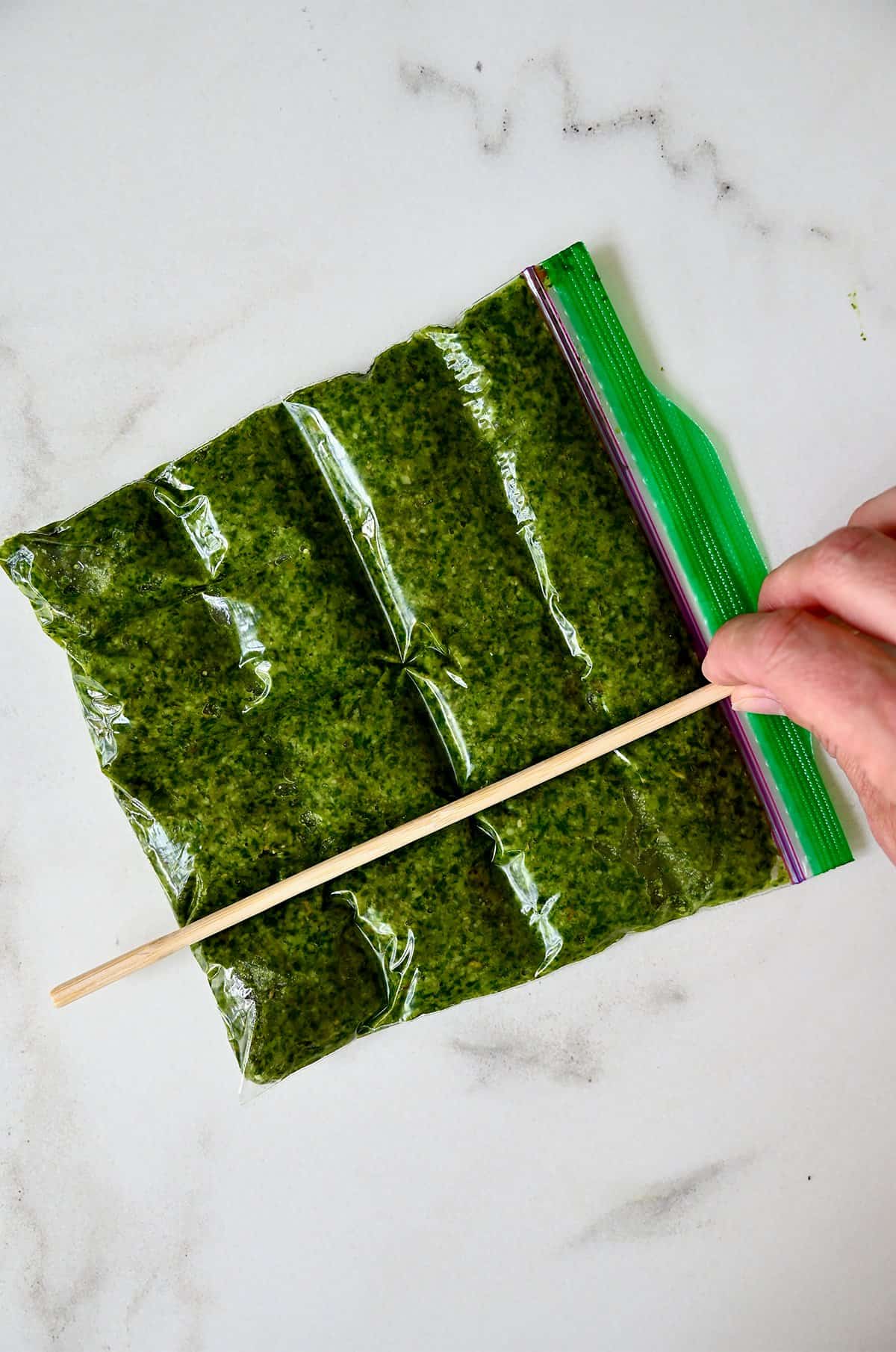
Have a favorite way to use pesto? Let me know in the comments below!
Craving more? Subscribe to Just a Taste to get new recipes, meal plans and a newsletter delivered straight to your inbox! And stay in touch on Facebook, TikTok, Pinterest and Instagram for all of the latest updates.
Equipment
Ingredients
- 2 1/2 cups fresh basil leaves, washed and dried thoroughly
- 2 Tablespoons grated Parmesan cheese
- 3 cloves garlic
- 2 Tablespoons pine nuts (See Kelly's Note)
- 1/2 teaspoon kosher salt
- 1/8 teaspoon black pepper
- 1/4 cup extra virgin olive oil
Instructions
- Add the basil, Parmesan, garlic, pine nuts, salt, and pepper to a food processor or blender. Pulse until everything is finely chopped and combined.
- With the machine running, slowly stream in the olive oil. Blend until the pesto is mostly smooth but still has a little texture, scraping down the sides as needed.
- Taste and adjust the seasoning with more salt or pepper, if needed. Use immediately, or transfer to an airtight container and refrigerate until ready to serve.
Kelly’s Notes
- I like to toast the pine nuts in a dry skillet for a few minutes to deepen their flavor. Allow them to cool slightly before blending. No pine nuts? Try walnuts, almonds, cashews or even pistachios.
- Optional: While traditional pesto doesn’t include lemon juice, a squeeze of fresh lemon can brighten the flavor and help preserve that vibrant green color, especially if you’re storing it for later. Try adding 1 to 2 teaspoons, if desired.
-
★ Did you make this recipe? Don’t forget to give it a star rating below!
Nutrition
Did you try this recipe?
Leave a comment below with your star rating!
This post may contain affiliate links.


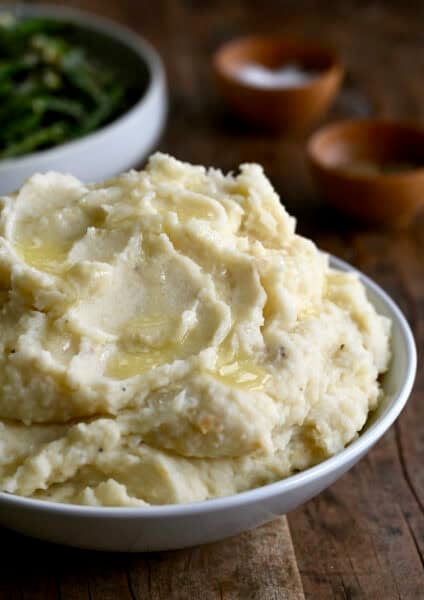

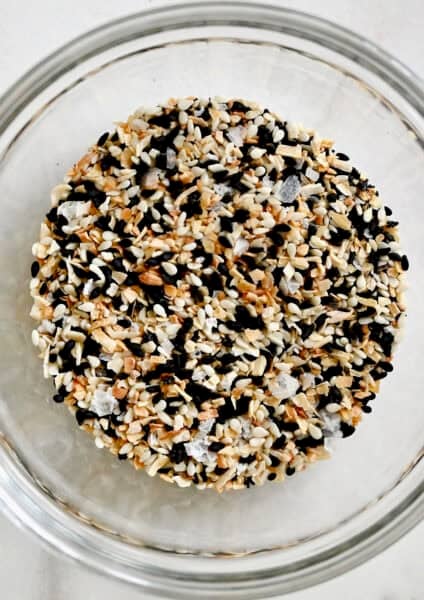

Used the oversupply of basil from my garden and this was absolutely perfect. Loved the ratio of the garlic. Froze a bunch in my ice cube tray for easy meals.
So glad you enjoyed the recipe, Amanda!